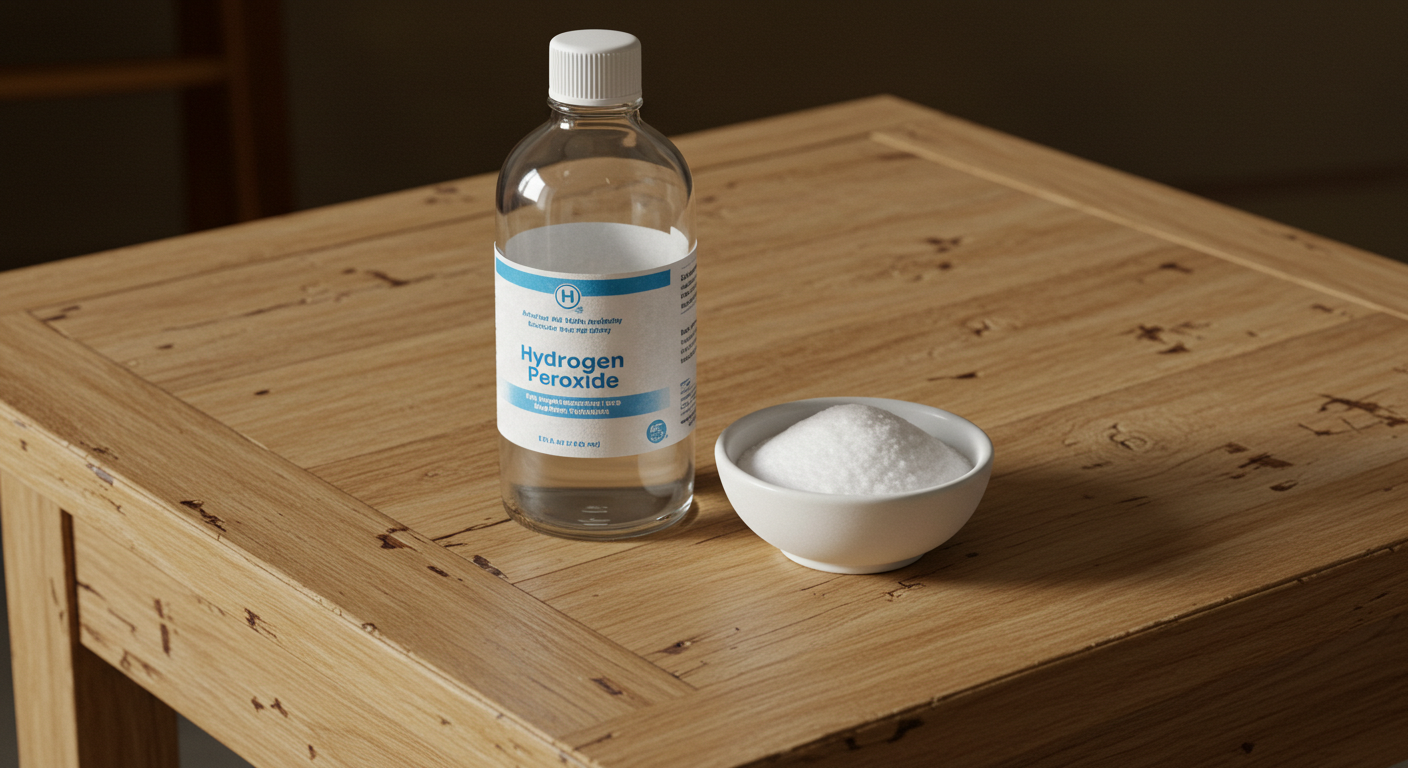Contents

Complete Guide: Using Hydrogen Peroxide for Teeth Whitening
To achieve a brighter smile at home, several methods are available. Among the most popular is the use of hydrogen peroxide, an effective solution that requires certain precautions. Let's examine the essential aspects of this whitening technique together.
The Properties of Hydrogen Peroxide for Teeth
Hydrogen peroxide is a chemical compound distinguished by three fundamental characteristics:
- Its antiseptic action
- Its disinfecting properties
- Its whitening power
This substance specifically targets the molecules responsible for tooth discoloration. Its mechanism of action is based on an oxidation process that effectively breaks down stain molecules. It is particularly effective against stains caused by regular consumption of coffee or tea but should be used at a low concentration (maximum 3% for at-home oral use).
Precautions and Contraindications
The use of hydrogen peroxide requires special attention:
Essential Precautions
- Consult your dentist before starting any at-home whitening regimen.
- Never use solutions with a concentration higher than 3%.
- Do not overuse; limit applications to short periods (e.g., a few minutes, once or twice a week).
- Ensure you have no untreated cavities or gum disease.
Who Should Avoid This Treatment
- Pregnant or breastfeeding women.
- Children and teenagers.
- Individuals with dental sensitivities, gum disease, or existing dental restorations on front teeth.
Alternative Whitening Solutions
Professional Methods
- In-Office Whitening
- Performed by a dentist using a higher concentration gel.
- Fast and dramatic results in a single visit.
- Gums and soft tissues are protected during the procedure.
- Custom Take-Home Kits from a Dentist
- Custom-fitted trays for even application.
- Professional-strength gel for safe and effective results at home.
- Progressive treatment over several weeks.
Other Available Options
- Whitening toothpastes with mild abrasives or chemical agents.
- Over-the-counter whitening strips.
- Activated charcoal toothpaste (use with caution due to its abrasiveness).
Recommended Usage Protocol
For a safe at-home whitening paste, you can mix hydrogen peroxide with baking soda. **This should be done with extreme caution and not as a replacement for professional advice.**
- Choose a 3% hydrogen peroxide solution.
-
Prepare the paste:
- Mix a few drops with baking soda.
- Create a paste-like consistency.
-
Application:
- Gently brush onto teeth for no more than one minute.
- Rinse your mouth thoroughly with water afterward.
- Do not use this method more than once or twice a week to avoid enamel damage.
Results and Maintenance
Expected Results
- Improvement of 1 to 2 shades.
- Results can last several months, depending on lifestyle.
Maintenance
- Maintain rigorous oral hygiene.
- Limit staining foods and drinks like coffee, tea, and red wine.
- Attend regular dental check-ups and cleanings.
Frequently Asked Questions
Regarding Whitening Toothpastes
Check the RDA (Relative Dentin Abrasivity) index to protect tooth enamel. High abrasivity can lead to hypersensitivity and increase the risk of cavities.
Regarding Maintenance
Prioritize a complete daily hygiene routine:
- Regular brushing.
- Use of appropriate tools like floss and mouthwash.
- Periodic dental check-ups.
In conclusion, hydrogen peroxide can be an effective solution for teeth whitening, but its use must be controlled and sensible. The key to a radiant smile lies, above all, in impeccable daily oral hygiene, supported by appropriate tools and regular professional care.
